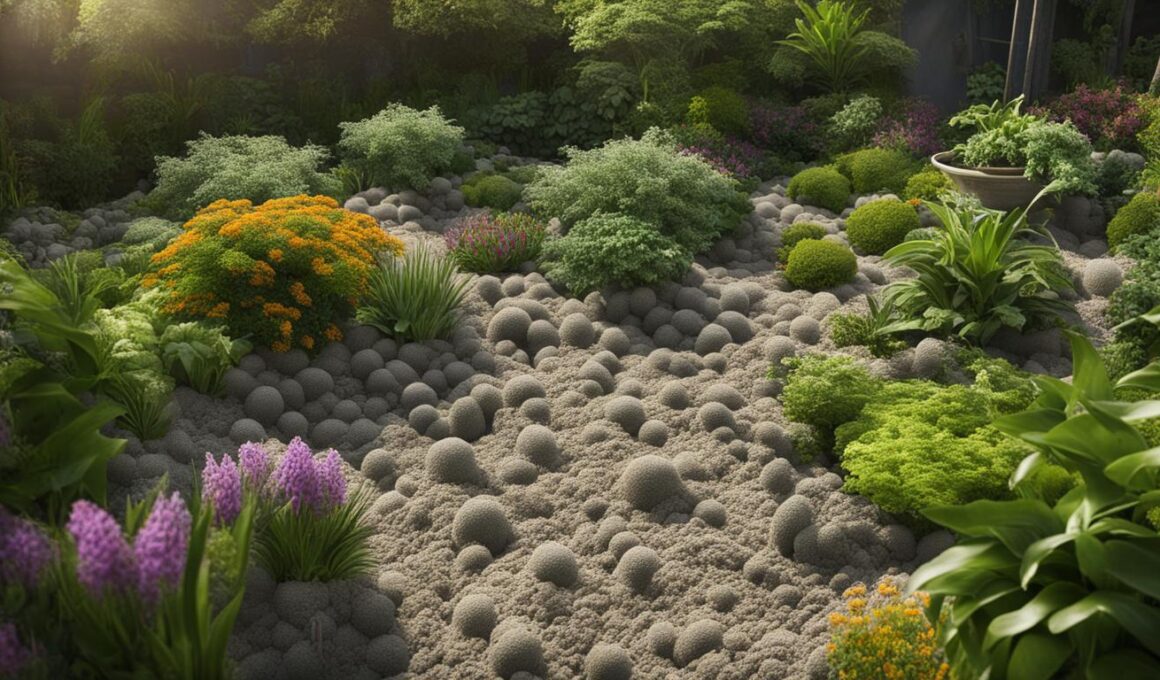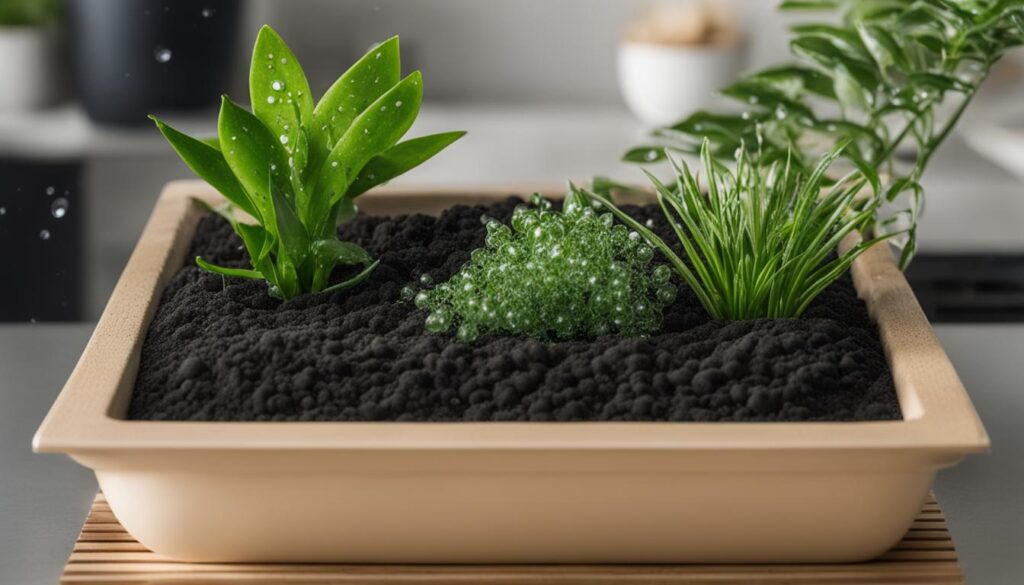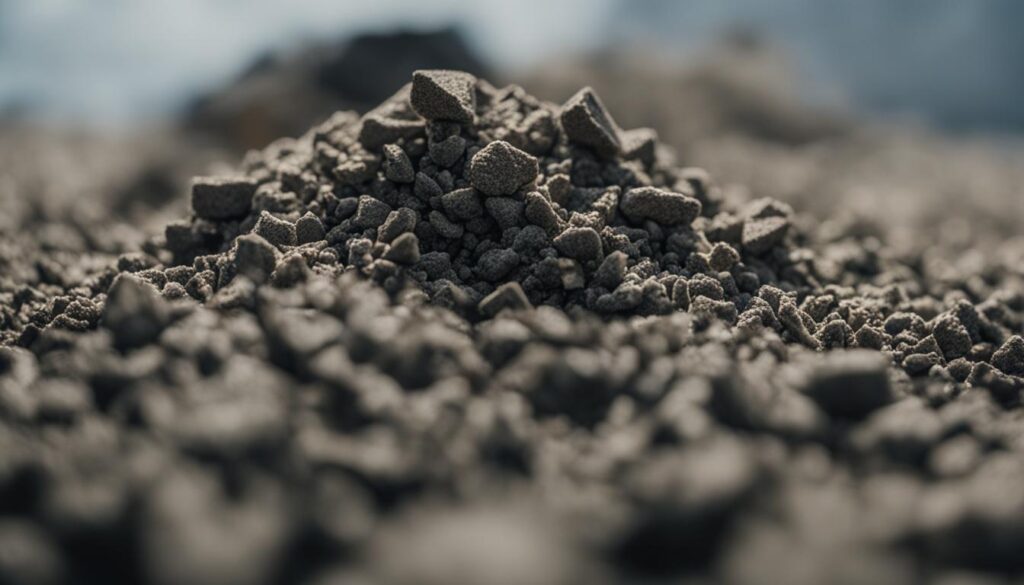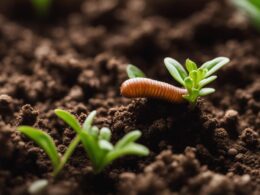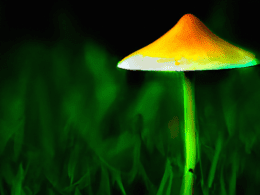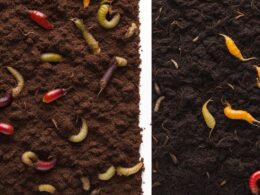Discover the transformative power of a pumice soil mix for all your gardening needs. Composed of whipped volcanic rock, this unique soil amendment possesses incredible drainage and aeration properties, making it an optimal choice for cultivating succulents, cacti, and other select plants that require these conditions for healthy growth. In addition to enhancing your garden’s soil structure, pumice boasts a neutral pH and contains essential trace minerals that nourish and sustain your plants.
Post Summary
- Pumice soil mix offers excellent drainage and aeration for optimal gardening.
- Comprised of volcanic rock, pumice is a lightweight, porous soil amendment.
- Neutral pH and trace minerals in pumice promote healthy plant growth.
- Perfect for succulents, cacti, and plants that require well-draining soil.
- Pumice helps maintain soil structure over time without compacting or washing away.
Understanding Pumice: The Volcanic Rock in your Garden
Pumice is a unique volcanic rock that brings significant benefits to the world of gardening. Its origins from volcanic eruptions and its natural properties make it an optimal choice for enhancing plant growth, soil health, and overall garden success. In this section, we will explore pumice in detail and its contributions to improved soil conditions, microbial life, and healthy plant growth.
What is Pumice & How Does it Enhance Plant Growth?
Pumice is a lightweight, porous volcanic rock formed when molten lava cools rapidly, trapping gas bubbles within. The resulting structure is highly porous, which enables it to create well-aerated soil conditions and enhance drainage. These properties not only prevent root rot but also encourage proper root development, ensuring the healthy growth of various plants, particularly those sensitive to overwatering.
As an essential soil amendment, pumice also offers the benefit of a neutral pH, making it suitable for most plant types. Additionally, pumice contains trace minerals that are readily available to plants, promoting their growth and overall health.
The Ideal Conditions Pumice Creates for Microbial Life
Beyond fostering excellent drainage and air circulation, the porosity of pumice also creates ideal conditions for microbial life to thrive. As microbes play a crucial role in breaking down organic material and releasing nutrients for plant uptake, their presence greatly contributes to overall soil health.
Another benefit brought on by pumice’s supportive environment for microbial life is the sustainable structure of the soil. The use of pumice helps maintain soil consistency without the need for frequent amendments, leading to a more efficient and eco-friendly gardening approach.
- Enhances plant growth by providing well-aerated soil conditions and improved drainage.
- Supports microbial life, improving soil health and leading to more robust plants.
- Creates a sustainable soil structure, reducing the need for frequent amendments.
With an understanding of pumice and its benefits for plant growth and soil enhancement, it’s easy to see why this volcanic rock has become a popular choice among gardeners seeking organic and sustainable gardening methods.
The Multifaceted Benefits of Pumice Soil for Your Plants
Pumice is an exceptional soil amendment that offers a variety of advantages for plants and gardeners alike. From water runoff prevention to fertilization retention, its unique properties contribute to promoting sustainable soil structure and health. Let’s explore some of the key benefits of incorporating pumice amendments into your gardening routine.
| Pumice Advantages | Description |
|---|---|
| Water Runoff Prevention | By increasing soil absorption, pumice helps to prevent water runoff, particularly in sandy soils, ensuring efficient water use and conservation. |
| Fertilization Retention | Pumice’s porous nature allows it to retain fertilizer, providing your plants with access to essential nutrients for optimal growth. |
| Sustainable Soil Structure | Pumice sustains long-term soil structure by preventing compaction and decomposition, promoting healthy air and water flow in the soil. |
| Soil Health Improvement | Incorporating pumice amendments into your soil can lead to improvements in overall soil health and nutrient availability for your plants. |
Preventing Water Runoff and Fertilization Loss
One of the primary benefits of using pumice in your soil mix is its ability to prevent water runoff and fertilization loss. With its high absorption capacity, pumice can help sandy soils better retain water and ensure that nutrients from fertilizers are available for plant roots to absorb. This results in more effective water use and reduced wastage of both water and fertilizer resources.
Sustainable Soil Structure and Health
Pumice amendments provide a sustainable soil structure by maintaining its integrity over time. Unlike other soil amendments that decompose or compact, pumice remains intact, ensuring constant support for air and water flow within the soil. This is especially beneficial for clay soils, as it keeps them loose and prevents the formation of hard, compacted layers that can inhibit plant growth.
By incorporating pumice into your soil, you can also improve overall soil health. The porous nature of pumice provides a suitable environment for beneficial microbes and microorganisms to thrive, further enhancing the vitality of your soil and plants.
- Water Runoff Prevention: By increasing soil absorption, pumice helps to prevent water runoff, particularly in sandy soils, ensuring efficient water use and conservation.
- Fertilization Retention: Pumice’s porous nature allows it to retain fertilizer, providing your plants with access to essential nutrients for optimal growth.
- Sustainable Soil Structure: Pumice sustains long-term soil structure by preventing compaction and decomposition, promoting healthy air and water flow in the soil.
- Soil Health Improvement: Incorporating pumice amendments into your soil can lead to improvements in overall soil health and nutrient availability for your plants.
In conclusion, pumice is a highly valuable soil amendment that offers a range of benefits for your plants. By preventing water runoff, retaining fertilization, and promoting sustainable soil structure and health, pumice amendments can help you achieve optimal gardening success.
How to Mix Pumice Soil for Various Plant Types
Creating the right pumice soil mix for your plants is essential to ensure proper drainage and aeration, which is particularly important for succulents and other water-sensitive plants. To achieve the optimal mix, adjust the ratio of pumice and other materials, like organic potting soil, according to the specific needs of the plants.
For succulents and water-sensitive plants, such as euphorbias, the recommended pumice soil mix ratio allows for careful drainage while providing the necessary nutrients:
| Plant Type | Pumice Soil Mix Ratio |
|---|---|
| Succulents | 50% Pumice : 50% Organic Potting Soil |
| Water-sensitive plants (e.g. Euphorbias) | 50% Pumice : 50% Organic Potting Soil |
By creating a balanced mix of pumice and organic potting soil, you are helping your plants thrive in an environment that offers ample drainage, preventing the risk of overwatering or drowning them in excess water. As you grow more accustomed to working with pumice, you can experiment with the ratio to find the ideal mix for your garden’s specific needs.
- Measure out equal parts pumice and organic potting soil using a suitable container.
- Mix the two materials together thoroughly, ensuring even distribution of pumice within the potting soil.
- Fill the planting container with the mixed pumice soil, leaving some room at the top for watering and plant growth.
- Plant your succulents or water-sensitive plants in the prepared soil, ensuring the root system is fully covered.
- Water the plants as needed, taking care not to overwater or saturate the soil.
Remember that the ideal pumice soil mix ratio may vary depending on your specific plants, climate, and other factors. Keep an eye on your plants’ health and adjust the mix as needed to promote optimal growth in your unique garden environment.
Pumice in Action: Reinvigorating Overwatered and Humid Gardens
Overwatered gardens and humid environments can pose significant challenges for maintaining the health of plants, particularly for those sensitive to excess moisture. Pumice, with its natural absorption capabilities, can effectively address these issues, providing a much-needed boost to reinvigorate the affected gardens.
Its sponge-like properties allow pumice to absorb excess water while simultaneously ensuring that the soil remains adequately hydrated. Succulents and other plant varieties sensitive to stagnant wet conditions greatly benefit from the addition of pumice to their soil mix.
Here are some practical ways to incorporate pumice into a garden facing overwatering or high humidity:
- Amend the soil mix by combining pumice with the existing potting medium, aiming for a balance of approximately 50% pumice and 50% regular soil.
- For established plants suffering from waterlogged soils, gently blend pumice directly into the top few inches of soil without disturbing the roots.
- Construct a raised garden bed using layers of pumice to improve drainage and reduce the risk of excess moisture accumulating around plant roots.
- For outdoor, in-ground gardens with clay or compacted soil types, incorporate pumice into the existing soil to improve overall drainage, aeration, and soil structure.
Pumice’s ability to hold onto water and slowly release it back into the soil, regulates moisture levels, making it a great solution for decompacting and rehydrating soils impacted by overwatering or excessive humidity.
In conclusion, pumice provides an invaluable solution to pumice reinvigoration initiatives within overwatered and humid gardens. Its unique, natural absorption capabilities ensure the soil remains at an optimal moisture level, allowing your plants to flourish and maintain their overall health.
The Ultimate Pumice Soil Mix Recipe for Healthy Gardening
Creating the perfect pumice soil mix for healthy gardening is essential to ensure proper water retention and aeration for your plants. A general recommendation is a mix of half pumice and half potting soil, which provides a balanced environment for plant growth and root development. Pumice’s heaviness ensures its integration into the soil, preventing separation while maintaining long-term soil quality.
Best Practices for Mixing and Planting with Pumice
To achieve a successful pumice soil mix and follow best practices, adhere to the following steps:
- Choose the appropriate plants: Opt for plants that require good drainage and aeration, such as cacti, succulents, and some alpine plants.
- Measure out equal parts of pumice and potting soil: The ideal ratio of pumice to potting soil is 1:1, providing the right balance for proper water retention and aeration.
- Mix the components thoroughly: Ensuring a consistent and homogeneous mixture allows the pumice and soil to work together effectively, distributing all nutrients and benefits evenly throughout the soil.
- Plant your plants in the prepared pumice soil mix: Transfer the plants into the newly formed mixture, taking care not to damage the roots during the process.
- Care for your plants as usual: Maintain regular watering, fertilization, and other necessary care practices specific to your plant species, while observing the impact of the new pumice soil mix on their growth and overall health.
Utilizing these best practices and incorporating pumice into your gardening routine can substantially improve the overall health and growth of your plants. It not only retains an optimal balance of water and air in the soil, but also contributes to sustainable, long-lasting soil structure and quality.
Innovative Uses of Pumice Beyond Soil Amendment
Beyond gardening, pumice has innovative uses that make it an invaluable resource in a variety of industries. One of its most significant functions is providing eco-friendly solutions for absorbing spilled oil, grease, and other toxic liquids. Thanks to its highly absorbent nature, pumice can lock in harmful fluids until proper disposal is possible, making it an environmentally responsible choice for cleanup operations.
Some of the most notable Eco-friendly Pumice Uses include the following:
- Spill Absorption: Pumice granules are highly effective in cleaning up spills, such as oil and chemical spills, due to their absorbent properties. These granules can be spread over the affected area to help contain and soak up the spill, making cleanup more manageable and environmentally friendly.
- Liquid Cleanup: In industrial settings, pumice powders and granules can be used to absorb grease and other liquids that commonly accumulate on floors and surfaces. This helps maintain a safer and cleaner work environment.
- Water Filtration: Pumice can also be used within water filtration systems due to its porous nature, which allows it to capture and remove contaminants effectively.
These practical and innovative applications of pumice highlight its versatility beyond soil amendment, emphasizing its benefits for both industrial and environmental purposes.
How Can Pumice Soil Mix Enhance My Garden’s Beauty and Health?
Pumice soil mix is one of the ultimate garden must-haves for enhancing beauty and health. Its lightweight and porous nature improves soil aeration and drainage, promoting healthy root growth. The high mineral content also helps with water retention, reducing the need for frequent watering and creating a thriving garden environment.
Conclusion
The numerous benefits of pumice make it a superior choice for gardeners aiming for sustainable and successful gardening practices. Its origin as a volcanic rock lends unique properties to pumice soil mix, ensuring soil health, proper drainage, and excellent aeration, all of which contribute to impressive plant growth.
As a versatile soil amendment, pumice is ideal for a variety of plant types, including succulents and water-sensitive plants that require specific growing conditions. Furthermore, the sustainable nature of pumice ensures its long-term contribution to soil structure, keeping your garden thriving season after season.
In addition to its gardening applications, the eco-friendly properties of pumice make it a valuable resource in environmental cleanups. Its impressive absorbency efficiently traps spilled oil, grease, and other toxic liquids until proper disposal, showcasing its commitment to both gardening success and environmental responsibility. Choose pumice soil mix to elevate your gardening experience and contribute to sustainable practices that benefit both your plants and the planet.





